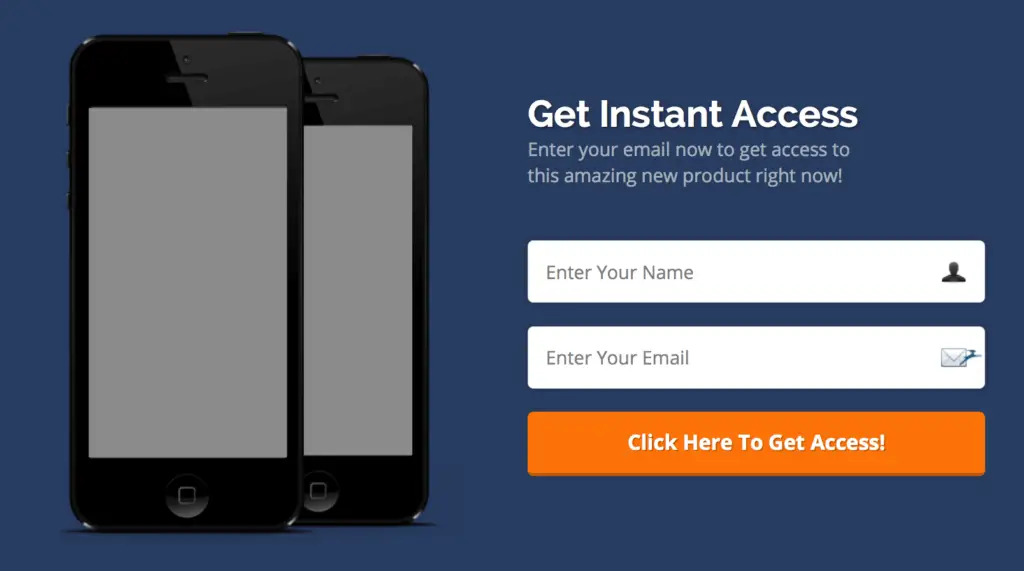What is an AB test - Definition and examples

In this article you will learn what an AB Test is (A / B Testing) and how you can leverage it to optimize your digital marketing efforts. The ab tests will help you to always refine your content and marketing strategy based on real data.
If you are looking for a method to dramatically improve your marketing results, read this cover to cover
Let's start!
What is an A / B test?
Split testing, commonly known as A / B testing, split testing, or A / B testing, allows marketers to compare two different versions of certain content on the Internet, to determine which performs better, with the goal of generating feedback. conversions.
Marketers, marketers, and professionals around the world agree that one of the easiest ways to increase your post-click landing page conversion rate is also the most effective.
This is why companies around the world are spending more and more of their budgets on the powerful and relatively simple method of optimization known as split testing.
Where can I apply an AB test?
The ab tests can be applied to advertising banners, to the sales pages, titles, images or any content you post. The possibilities are limitless.
For example, you can apply an AB test to a page of destination to optimize it and improve its performance. In this case, you will have 2 versions of the same page. One will be the "control" (the original) and the other a "variation".
What programs can I use to take the AB tests?
It will depend exclusively on the platform you are using and the content you want to test.
Usually, the ab testing option is offered on many digital marketing platforms, such as: ClickFunnels, Leadpages, GetResponse, AWeber, etc.
If you want to apply this to a video on your YouTube channel, you can do so with tools like TubeBuddy which include in some of their plans the possibility of doing ab tests of different types. In short, there are many programs and platforms that offer the option of ab testing, but this is relative to what you need.
You can also apply ab tests on most advertising platforms, such as Facebook Ads, Google Ads, Microsoft Advertising, etc. These companies want to improve your performance, and ab testing will help you do that.
What is the AB test for?
A / B Testing or A / B Testing is a concept that will help you in almost all possible scenarios of digital marketing industry.
Here is a video that explains in very simple terms what an AB Test is:
The usual way of doing an AB test (changing one variable at a time)
The usual and usual way to do an ab test is to take your original content and apply a single edit to it. The idea is to isolate the variables ...
This way you can find out exactly which change produced the results.
For example, if I take a banner ad that I posted on Facebook and create a new version of it but with a different image, I may later find out which of the two images performs better.
An example of a common AB test
Let's look at an example of a common ab test, in which the only difference between the two versions will be a single variable. In this case, we will change the title.
Suppose you wanted to see if a different headline would increase the conversion rate on your landing page after receiving a click. The original title says:
"How to increase the sales of your business".
And the title of the variation says:
Learn the Secret Method Experts Use to Increase Sales for Any Business. »
After having generated web traffic for both versions, you find that the variant produces more conversions than the original. Since there is only one difference between the 2 pages, you can be sure that the title was the reason for the increase.
Another way to take an AB test
The main problem with the ideal way of doing an AB test, changing only one item per test, is that each test requires, several times, tens (sometimes hundreds) of thousands of visits before you can conclude what the test is. better.
So there is also a more practical way to do it. Let's look at another example:
You want to increase conversions on your post-click landing page, so you need to make the following changes:
Title of "How to increase the sales of your business" à "Learn the Secret Method Experts Use to Increase Sales for Any Business".
BUT, now we're going to apply another additional change:
In the call to action button of the form on the destination « Send " toward "Show me the secret".
A four-field form (name, email address, phone number, company name) to a two-field form (name, email address).
After driving traffic to both versions, you find that your new variant, with the changes previously implemented, generates 8% more conversions than the original.
Brilliant!
But… wait a minute… you don't know why this increase in conversions happened. If you had taken an AB test or tested one item at a time, you could confidently give a reason.
But come to think of it, do you really care?
Remember the main goal of optimization and AB Testing: increase your conversions above all
Many companies don't care either. They are interested in driving conversions and they don't care why or how it happens.
When you don't have a lot of time, traffic, and staff, or you're doing a major overhaul, “only change one item per test” isn't practical advice.
However, keep in mind that running a split test is not as easy as “making a change and getting the same traffic on every page”. There is much more to it, regardless of which method (practical or precise) you choose to use.
Examples of A / B tests
Next, we'll see some examples of using a / b testing in different digital marketing scenarios:
Examples of A / B tests - AB test in email marketing
The A / B test, in the context of marketing by e - mail , is the process of sending one variant of your campaign to a subset of your subscribers and a different variant to another subset of subscribers, with the ultimate goal of determining which variant of the campaign you get the best results from. .

A / B testing can vary in complexity, and simple A / B testing may include sending multiple subject lines to test which one generates the most opens, while more advanced A / B testing might include the test of completely different email models from each other to see. which generates the most clicks.
Once the test is complete and the winning version is found, the winning version will automatically be sent to the rest of your list.
A / B testing of your campaigns is a great way to increase your email open and click-through rates.
Here's a perfect video for beginners on how to apply ab testing to your email marketing strategy:
Examples of A / B Tests - AB Test in Facebook Ads
AB testing on Facebook ads is fundamentally similar to AB testing on Facebook ads. SEM campaigns such than Bing or Google Ads. The simulation reveals which elements of your ad work best for your target audience. You create different campaign strategies for the same offer and test which one works best per advertising dollar.
There is more to an AB test on Facebook than just the elements of your ad copy. You can AB test your campaign to find out which audiences are most receptive to your message, or what time of day or region is best for your ad. The tests are based on statistical analysis performed by the Facebook algorithm or an external testing tool.
Why should you use AB Testing in your Facebook ads?
AB testing sheds light on the optimization needed to get the best performance from your campaign. Take the guesswork out of the marketing process by helping you make data-driven decisions about what your audiences want and what is best for them.
By measuring the extent of the impact of subtle changes on your ad metrics, you can fine tune your campaign to produce better results.
A / B tests show the way for your winning strategy!
A / B testing in landing pages
One of the main places you will apply your AB testing is on your landing pages, as they are a fundamental part of your entire process or sales funnel.

The image shows an example of a landing page (landing page) created in ClickFunnels. Your goal is to capture the visitor's data to eventually convert them into a customer. The call to action is the orange button.
Now let's take a look at the steps for performing an ab test on a landing page.
Step 1: Start with a reason to take the AB test
As I mentioned before, the reason for split testing should be data driven. Does Google Analytics data show that your visitors spend an average of 5 seconds on your page before leaving? ...
Maybe your title and featured image should grab their attention better. Or maybe they feel cheated. You may need to do a better job of creating a post match between your ad and the post-click landing page.
Step # 2: Determine What You Are Trying To Improve
Ask yourself, “What am I trying to improve? "
In this case, you could make a guess: "After observing that the average post-click landing page users session is only 5 seconds, I think creating a more compelling headline will allow them to read the body." of text and spending more time on the page, which will ultimately lead to more conversions.
Through testing, you will be able to accept or reject this hypothesis.
Step # 3: Calculate your sample size
Before you can complete your test, you will need to achieve something called "statistical significance." The term refers to the number of visits each of your pages will need (control and variation) before you can be sure of your results.
In most areas, including conversion optimization, the commonly accepted importance level is 95% ...
This basically means that at the end of your test there is only a 5% chance that your results are due to chance. With a percentage of 95%, you can be 95% sure that the change in your conversion rate is a result of the changes you made to your landing page after the click was clicked.
Step 4: make your adjustments
If this is the title you are changing, update it. If your assumption involved changing the image shown, do so.
Make sure your original post-click landing page stays the same. Otherwise, your reference for the test will not be accurate.
Step # 5 Eliminate Confusing Variables
Unfortunately, your testing doesn't take place in a vacuum. This means that it is possible for a small external factor to significantly affect your test, which could lead to a misleading result.
Make sure that the traffic sources and referral ads are the same for both pages and that other variables that might affect your test are eliminated as best you can.
Step # 6: make sure everything is working properly
Examine everything before the test is activated. Is your post-click landing page the same in all browsers? Is your call to action button working? Are all the links in your ads working correctly?
Before you start posting anything, it's important to quality check all aspects of your campaign to make sure nothing threatens the accuracy of your results.
Step # 7: Drive traffic to your pages
Now is the time to drive traffic to your pages. Make sure that, as I mentioned before, your traffic is coming from the same place (unless, of course, you're running a split test of your traffic sources or your ads). And check where this traffic is coming from.
Once you have chosen your traffic sources, continue to run your test until you reach the sample size you identified in your pretest calculations for both pages (original and control). And, if you hit that number in less than a week, keep testing.
Because? ...
Because the days of the week have a big impact on conversions. Some days your visitors will be more receptive to your marketing messages than others.
If you have reached sample size and run the test
For at least a full week, while you factor in confusing variables that could plague your data, it's time to see the results.
Step 8: Analyze and optimize
How did your variant go? Did you get a big boost? A little? ...
Analyze the results and stay with the best version.
However, just because your post-click landing page is better than it used to be, doesn't mean it's the best it can be. There is always something to try. No campaign is perfect.
If you haven't gotten the results you wanted or created a variation that is worse than the original, don't worry. You haven't failed. You've just discovered something that's not affecting conversions on your page. Go ahead and keep testing.
Common mistakes in A / B testing
There are certain practices that are very common when you are starting to



